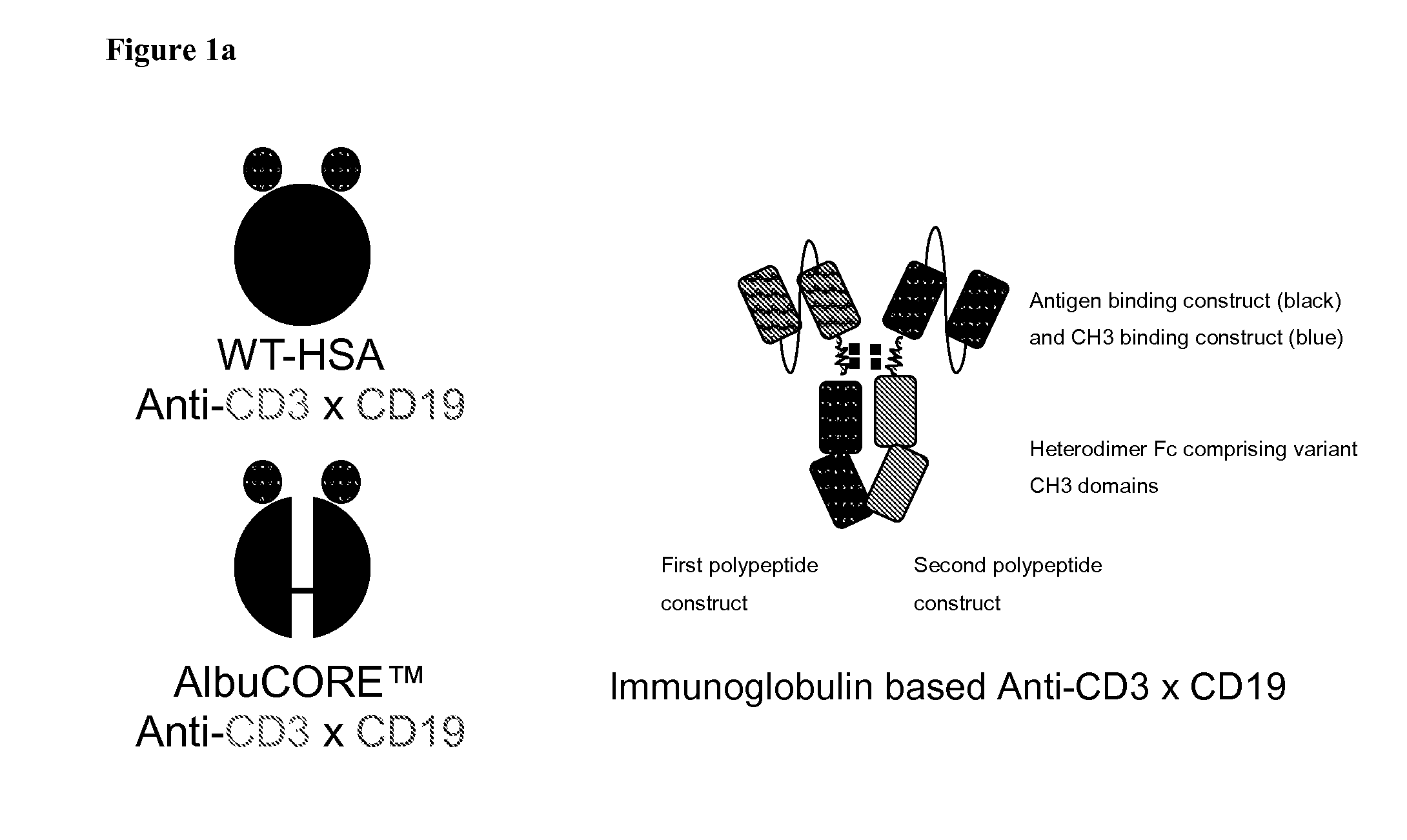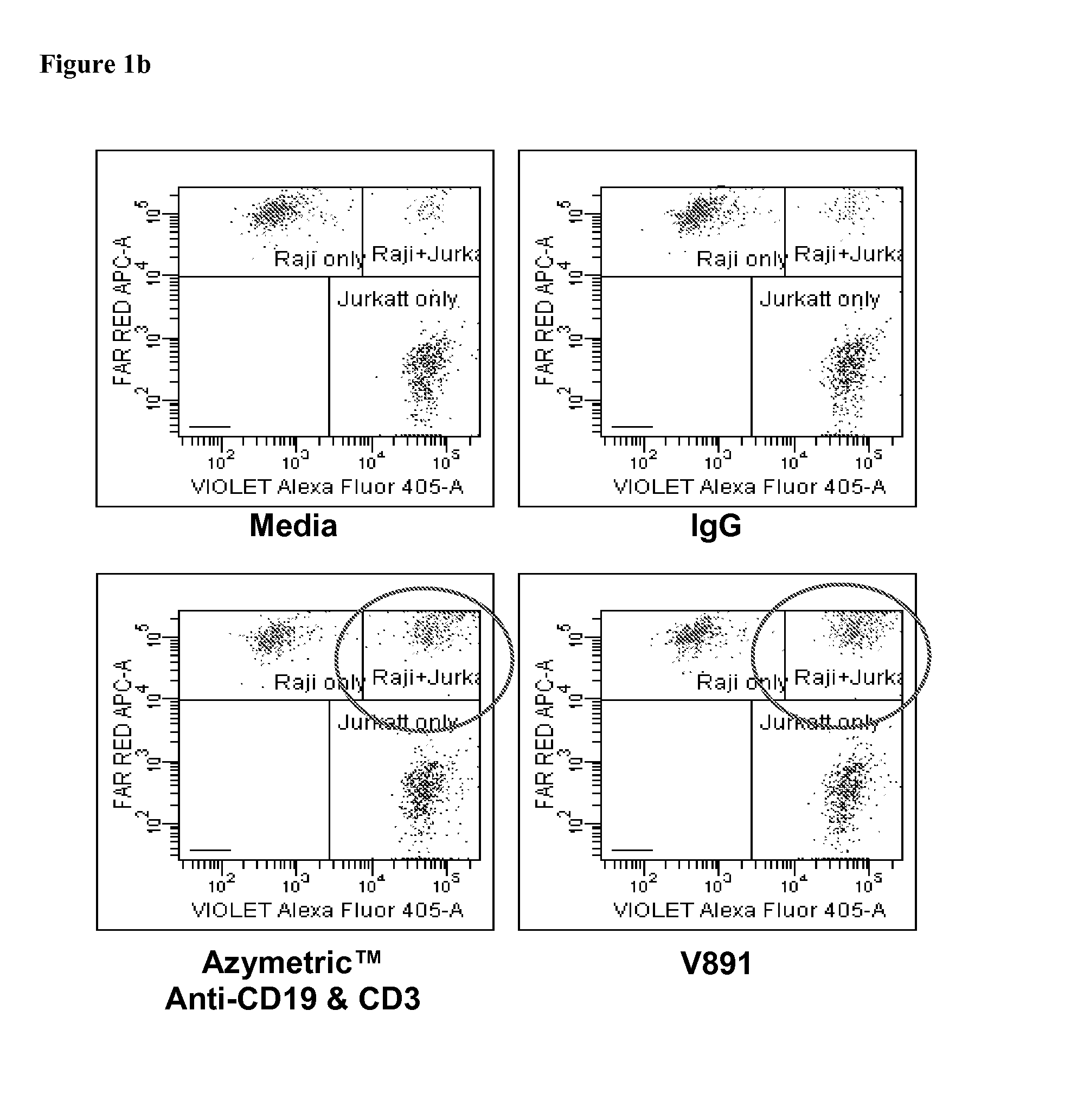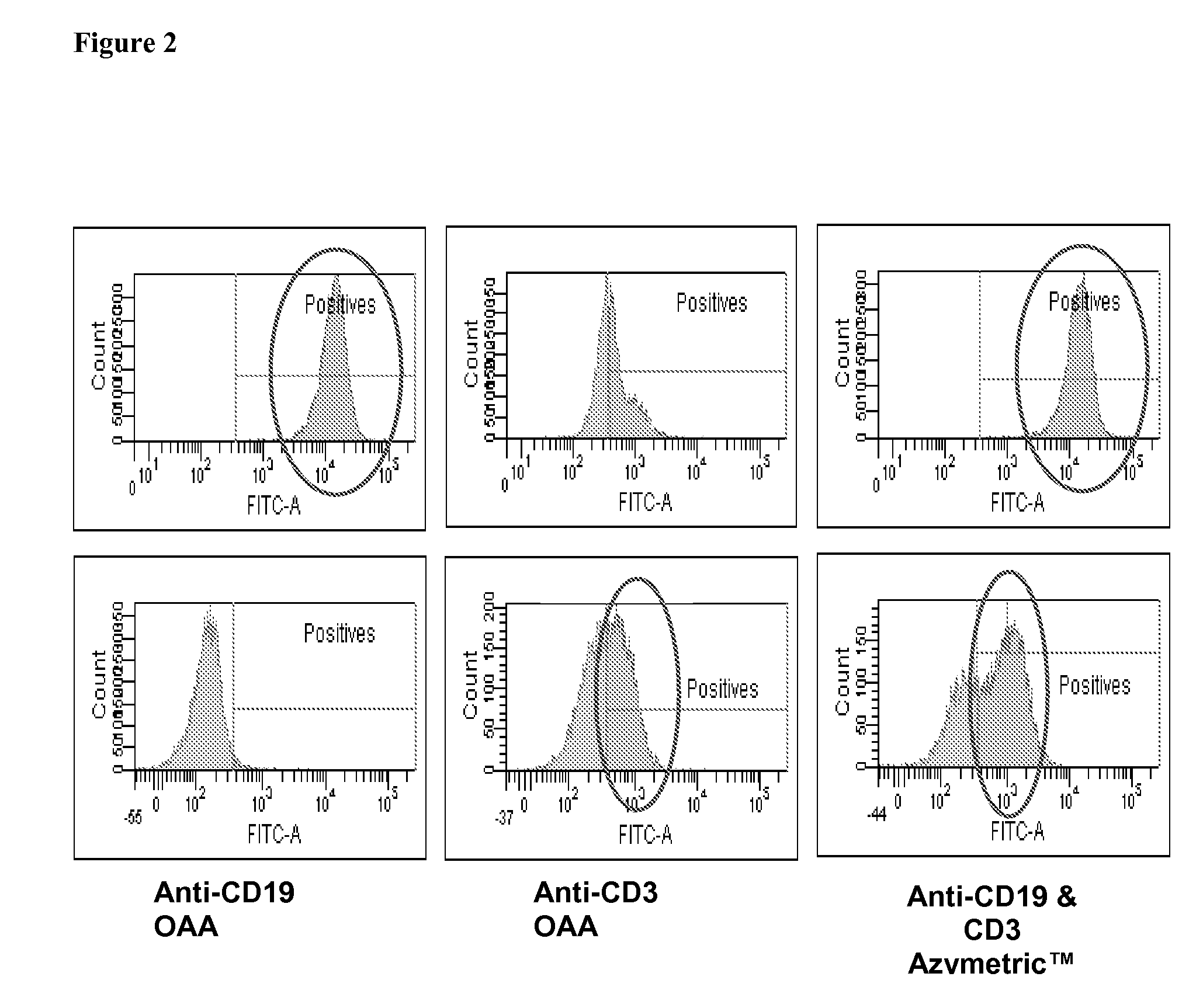Bispecific Asymmetric Heterodimers Comprising Anti-CD3 Constructs
a heterodimer and bispecific technology, applied in the direction of antibody medical ingredients, drug compositions, immunological disorders, etc., can solve the problems of challenging multivalent and multispecific therapeutic proteins with favorable pharmacokinetics and functional activity, and achieve the effect of increasing stability and reducing immunogenicity
- Summary
- Abstract
- Description
- Claims
- Application Information
AI Technical Summary
Benefits of technology
Problems solved by technology
Method used
Image
Examples
example 1
Bispecific CD3-CD19 scFvs Fused to an Asymmetric IgG1 Fc
[0315]Bispecific CD3-CD19 scFvs fused to an asymmetric IgG1 Fc heterodimer that exhibits stability comparable with native Fc homodimer, is a novel composition identified as v873. V873 belongs to a novel family of CD3-based bispecific azymetric IgG1 antibodies that can be expressed and purified with significantly higher yields in mammalian CHO cells compared to Amgen / Micromet bscCD19×CD3 BiTE bispecific. V873 demonstrates unexpected effector:target cell binding, bridging and target cell killing.
[0316]V873 and bispecific CD3-based azymetric antibodies have utility in targeted T cell mediated killing of diseased cells and hence may be useful for treating cancers and autoimmune and inflammatory diseases. V873 is a bispecific CD3-CD19 scFvs fused to an azymetric IgG1 Fc. v873 represents a novel bispecific azymetric antibody class comprising one anti-CD3 warhead and a second warhead comprising a cell surface antigen of a target cell,...
example 2
[0322]Design, expression and purification of heteromultimer constructs with a heterodimeric Fc.
[0323]Exemplary bispecific anti-CD3 and anti-CD19 heterodimeric antibodies
[0324]An exemplary schematic representation of an anti-CD3 / anti-CD19 antibody is shown in FIG. 1A.
[0325]v873, v874, v875 exemplify bispecific anti-CD3 / anti-CD19 heterodimeric Fc constructs and were prepared and tested as described below. Where the description includes a reference to BiTE, it refers to the antibody construct having an identical amino acid sequence to either the VH or VL of the anti-CD3 anti-CD19 BiTE molecule with or without modifications to variable heavy and light chain orientation (e.g. VH-VL) as indicated below.
[0326]v873 has a anti-CD19 BiTE (VL-VH) scFv on chain A and a CD3 BiTE™ (VH-VL) scFv on chain B of the heterodimer Fc with the following mutations L351Y_F405A_Y407V on chain A and T366L_K392M_T394W on chain B. [Polypeptide sequences correspond to SEQ ID No: 26 and 28]
[0327]V874 has a anti-C...
example 3
Heteromultimer v873 is Able to Bridge Jurkat CD3 T Cells and Raji CD19 B Cells
[0398]The ability of v873 to bridge T cells and B cells was tested by FACS analysis as follows.
[0399]Whole Cell Bridging by FACS
[0400]1×106 cells / ml suspended in RPMI were labeled with 0.3 μM of the appropriate CellTrace label and mixed and incubated at 37° C. in a water bath for 25 minutes
[0401]Pellets were resuspended in 2 ml of L10+GS1+NaN3 to a final concentration 5×106 cells / mi.
[0402]Cell suspensions were analyzed (1 / 5 dilution) by flow cytometry to verify the appropriate cell labeling and laser settings. Flow-check and flow-set Fluorospheres were used to verify instrument standardization, optical alignment and fluidics.
[0403]After flow cytometry verification, and prior to bridging, each cell line was mixed together at the desired ratio, at a final concentration of 1×106 cells / ml.
[0404]T:T bridging was assessed with Jurkat-violet+Jurkat-FarRed, B:B was assessed with RAJI-violet+RAJI-FarRed and T:B bri...
PUM
| Property | Measurement | Unit |
|---|---|---|
| Tm | aaaaa | aaaaa |
| Tm | aaaaa | aaaaa |
| dissociation constant | aaaaa | aaaaa |
Abstract
Description
Claims
Application Information
 Login to View More
Login to View More - R&D
- Intellectual Property
- Life Sciences
- Materials
- Tech Scout
- Unparalleled Data Quality
- Higher Quality Content
- 60% Fewer Hallucinations
Browse by: Latest US Patents, China's latest patents, Technical Efficacy Thesaurus, Application Domain, Technology Topic, Popular Technical Reports.
© 2025 PatSnap. All rights reserved.Legal|Privacy policy|Modern Slavery Act Transparency Statement|Sitemap|About US| Contact US: help@patsnap.com



